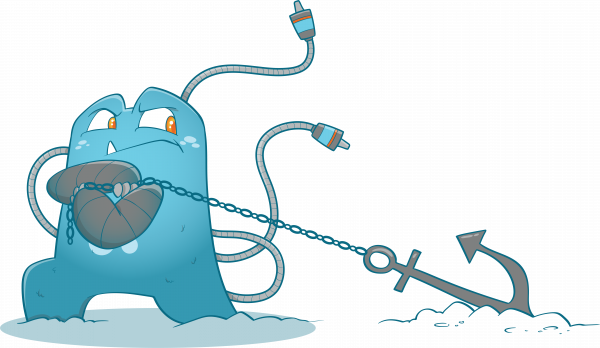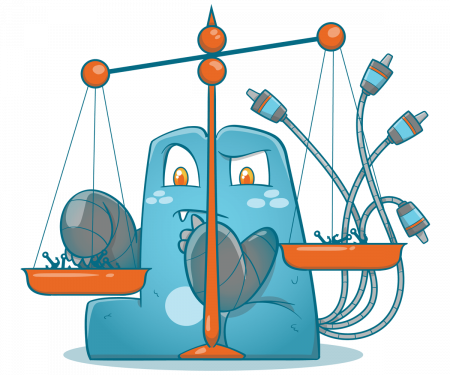What is Anchor Text and How it Affects Your SEO Ranking Plus 10 Types of Anchors

Raising your website’s ranking is quite a challenging task. You’d have to consider thousands of factors to ensure that your website shows up on the first page of SERPs and has good traffic. One of the key factors you need to consider is the anchor text. So, what is anchor text, and how does it work? What are the internal linking benefits of using anchor texts?
Read on to know the answers to these specific questions, and get additional information.
What is Anchor Text?
Whenever you visit a website, you’d most likely see text that may be underlined, different in color, or different sizes and shapes. An anchor text is a part of a website that helps you move from one page to another; basically, it links two distinct locations on the internet.
The primary purpose of anchors is to link web pages across the web. However, they can also launch downloads or open documents like PDFs or other files on online drives. Beware of some anchor texts as they may link you to illegitimate sites that could get your device hacked or your personal information stolen.
Note: Before clicking an anchor text, be sure that you trust the website. To check if an anchor is safe, hover over the link with your mouse to check if the URL looks legit.

Types of Anchor Texts
Generic Anchor Words
Generic anchor texts are the type of backlinks that include words like “website,” “info,” or phrases like “click to show more,” “visit this page,” and “click here.” Generic anchors usually don’t provide information about the page you’re linking to. This type of anchor also doesn’t have keywords or any relevance to the topic whatsoever.
Generic Anchor Words are powerful since it includes actionable language, a straightforward call-to-action, and draw attention to the link.
Generic Anchor Examples:
- Click here
- This blog
- Read more
- Download this
- Over here
- About the author
- More info
- This page
Branded Anchor Text
Unlike generic anchors, branded anchors have relevance in the website it is linked to, so it is excellent for building recognition. From the name itself, branded anchors include the website’s brand name.
The most significant advantage in using branded anchors is that they are a safe bet if you want to avoid getting flagged for spamming. But be sure that you know the basics of using this type of anchor text since Google could flag you for over-optimizing.
If your brand is affiliated with public figures such as influencers, journalists, or actors, Google might consider links with their names as a branded anchor as well.
Branded Anchor Examples:
- Ahrefs
- Internal Link Juicer
- According to CNN
Exact Match Link Text
If the anchor text used includes precise keywords of the page you are linking to, it is considered an Exact Match Link Test. This type of anchor text is essential, but you should pay attention to the number of links you place in your copy since you could be penalized for spam if it exceeds the number set by Google.
Exact Match Anchor Examples:
- Link building
- Running shoes
- B2B conversion rate optimization
- Used books
Partial Match Anchor Words
If your anchor text includes your keywords phrase together with generic, random, or stop words, it can be considered as a Partial-Match Anchor Word.
Examples of Partial-Match Anchor
- “Buy Running Shoes” targets running shoes
- “Ultimate Internal Linking Strategy Guide” targets internal linking strategy
- “Most Useful SEO Tools” targets SEO tools
Related Anchor Text
Related Anchor Texts are similar to partial match anchor words, but related anchor texts use various targeted keywords that don’t include precise keyword phrases.
It is vital to building a couple of related anchors to assist crawlers in understanding better what your links are all about. Including these types of anchor texts in your copy will help diversify your link profile, thus preventing Google from hitting you for spammy links.
Related Anchor Text Examples:
- Africa’s water crisis if you are linking to a page targeting “Africa cholera epidemic”
- Nike Flyknit Shoes targeting “buy running shoes”
- Search Engine Optimization targeting “ahref’s content strategies”
Random Anchor Text
There are also tactics where a site owner will pick random and generic anchors under the same category. However, Random Anchor Words can also include phrases that aren’t quite as generic as “visit page” but aren’t related to the target keyword.
Random Anchor Text Examples:
- “In-depth article” targeting any article
- “New Style” targeting fashion clothes
- Picking examples for this type of anchor text is quite difficult since they could be anything related to the keyword category.
Naked Link Text
Naked Anchor Texts are simply URLs pasted into the copy directly from the browser’s address bar. This type of link is usually found at the bottom of an article if someone references a website as a source.
Naked Anchor Examples:
- https://ahrefs.com/
- https://moz.com/
- https://www.semrush.com/
- https://www.internallinkjuicer.com/
Brand + Keyword Anchor Words
Brand+Keyword Anchor Words contain keywords and, at the same time, the brand name of the company. This is one of the anchor types that can help you optimize for the keyword without Google flagging you as spammy while building your brand recognition.
Brand + Keyword Anchor Examples:
- Ahrefs for keyword research
- Running shoes at Nike
- Coffee at Starbucks
Image Anchor Links
It is also known that adding ALT text to your image description is essential. You should add ALT text for images so that Google will have something to read as an image’s anchor (if an image is part of a link).
Similar to Related Anchor Texts, including Image Anchor Links into your copy can help in diversifying your anchor text profile. It is also beneficial to your SEO for Google Images. So, don’t forget to write a descriptive ALT text for the image link.
Image Anchor Examples:
- Ahrefs link building guide
- (company name) hiking accessories
- Pinewood trees for apartments
Long-Tail Anchors
Long-tail anchors are similar to partial anchors. The only difference is that they contain more words. With long-tail keywords, you get the chance to include your target keyword along with other related, generic, or branded keywords.
Long-tail anchors can include subheadings or headlines for a link. But, there are times when content writers will link to a whole sentence. Even though writing long-tail anchors is quite exhausting, it can still be helpful for SEO.
Long-Tail Anchor Examples:
- Read more about hunting on the (hunting website) blog
- Why is duplicate content harmful to SEO?
- Remember when Facebook was just starting?
Effects of Anchor Texts on SEO
For Google, the primary purpose of anchor words is to understand what a web page is all about to rank them for the right keywords. According to Google, anchors can provide more accurate descriptions of a link than how the pages use metadata to provide descriptions for themselves. In addition, neutral third-party sources should provide backlinks for anchors.
Whenever a website doesn’t or can’t supply the internet with a copy of a piece of their content for indexing, they can use anchors to help the algorithm crawl the content. Some examples include:
- Images
- Programs
- Applications
- Databases
- Documents
Google pays attention to how a site uses anchor words and uses them to rate your site’s content. However, if you’re doing something to manipulate the algorithm using anchors, sooner or later, Google will catch on. So just accept the randomness of how the algorithm does its magic in the ranking site.
You should also keep in mind that Google releases new algorithms and updates all the time, so manipulating it may not be a good idea—technically, a waste of time. That is why just follow tried and tested approaches that focus on using relevant anchors, avoiding over-optimizing, and creating a good UX for Google users.
Still can’t understand internal linking and anchor texts? Let InternalLinkJuicer assist you. Visit our page today to read more about internal linking.

Anchor Texts and User Experience (UX)
There are different ways to improve user experience using anchor texts. We’ve compiled some of the most effective methods that you can use to enhance UX.
- Anchor text should be descriptive
- Anchor text should provide information when read out of context
- Anchor text should link to nouns as much as possible
- Anchor text should be concise
- Anchor text should stand out
Optimizing Anchor Texts
When optimizing anchor texts, always remember that you should follow Google’s best practices—not manipulating the system in your favor. So, here are tips to optimize anchor texts without getting to the wrong side of Google:
Never Link to Toxic Websites
Always ensure that the sites you choose to link or earn links from don’t spread false information, promote hate, or engage in spammy practices. If you do, Google might penalize you for it. But, if you really need to reference a “bad” site, you can use a no-follow link to signal Google that you’re just using them as a reference, you’re not endorsing the site, and you don’t want it counted against your SEO.
Ensure that Anchor Words are Relevant
You may want to ensure that your anchors are related to the topic on the other side of the link. Since Google uses anchors as sources of information to learn what your website is all about, you’d want to pick anchors that make sense for the link you will be using.
Avoid Using Keyword-Rich Anchors when Internal Linking
If you try to use exact match anchors for internal links, Google might assume you’re trying to manipulate the system and penalize you for it. What you can do is use related anchors, generic anchors, or long-tail anchors for internal links.
Distribute Different Types of Anchors
Ensure that the different types of anchors you use in your copy are different. There’s no specific rule to this, but to ensure that you optimize your anchor texts properly, don’t use just one or two types of anchor texts for the full copy.
Pay Close Attention to Surrounding Text
To optimize the use of anchor texts, make the words surrounding the anchor relevant to it. This way, the user will have an idea of what is on the other side of the link. You should also avoid using the same words to prevent Google from flagging you for over-optimization.
Anchor Texts: An Overview
Anchor texts may look simple, but they’re an essential factor in improving your website’s SEO health. Through anchor texts, Google learns which sites are spamming and which are legit. Plus, anchor texts direct readers to information that they might need, thus improving the UX.
So, if you’re developing a link-building strategy, you shouldn’t dump anchors aside. As a site owner, you have to plan and pick which types of anchors to use for your website and where you’ll place them.






